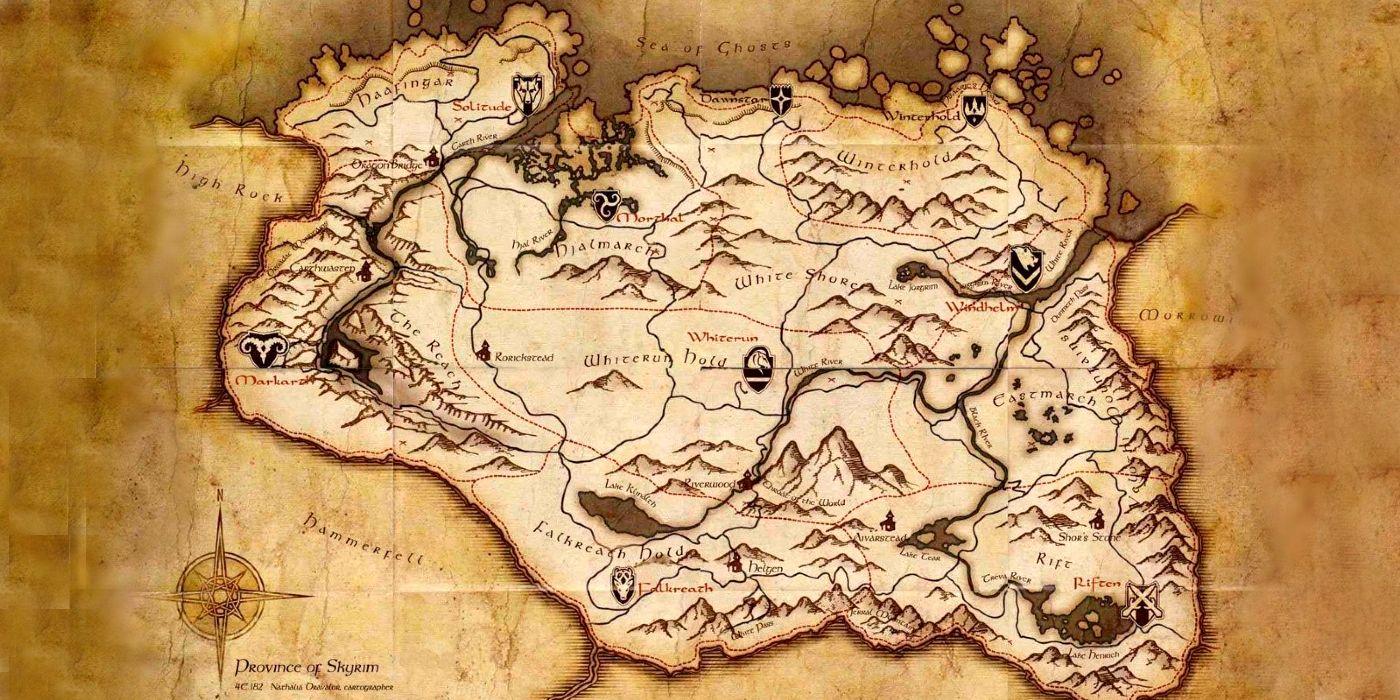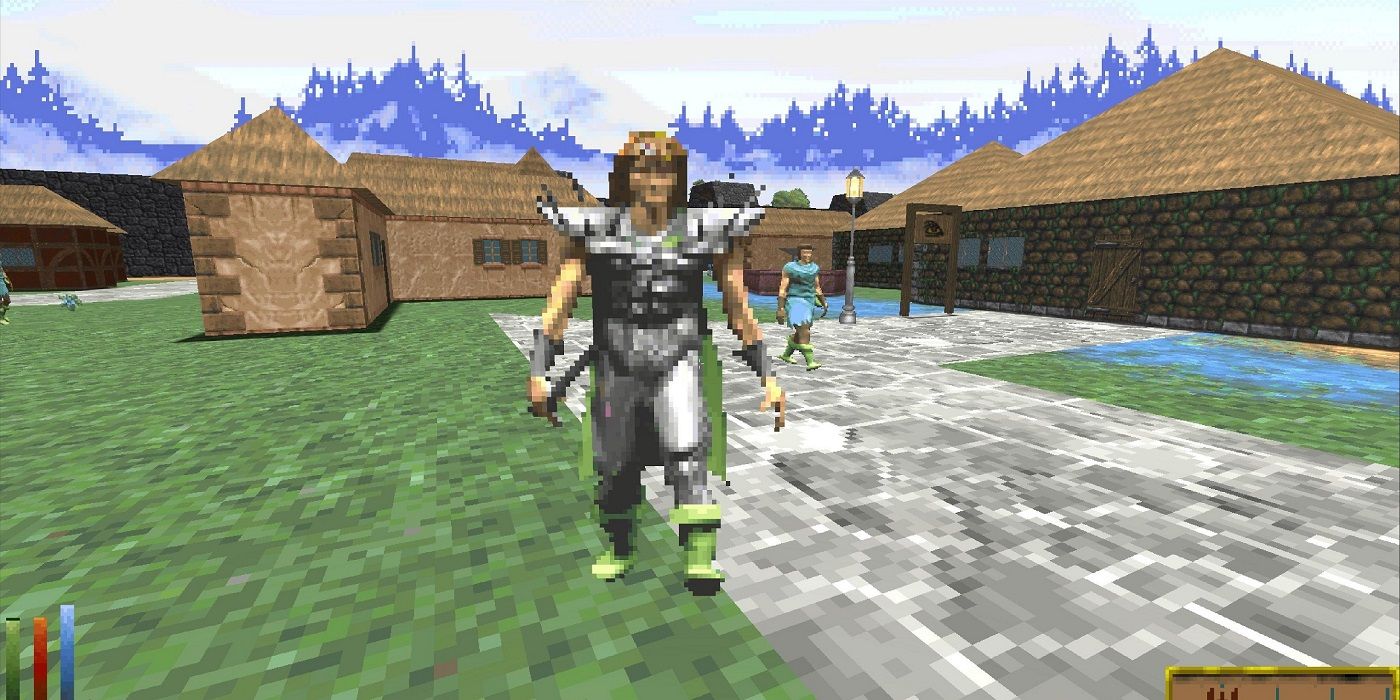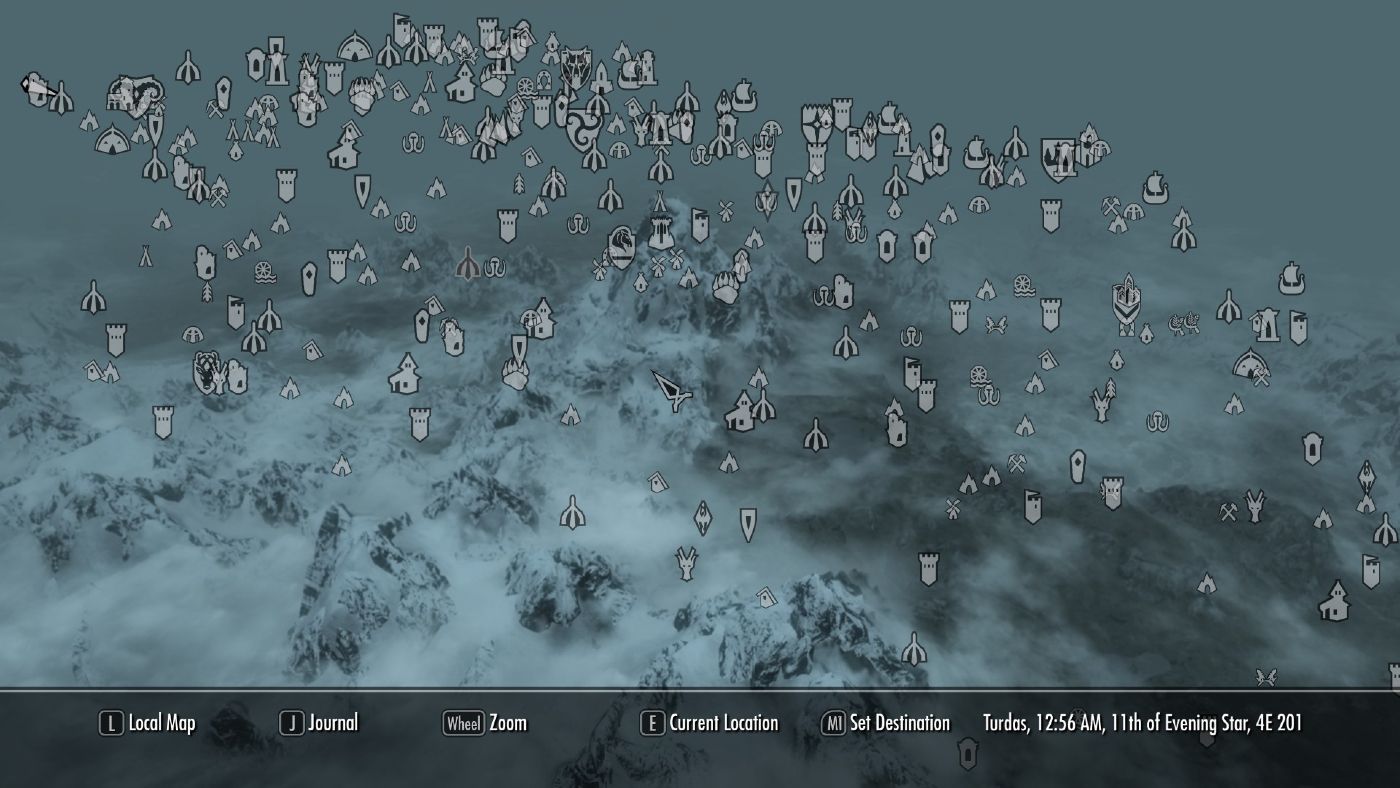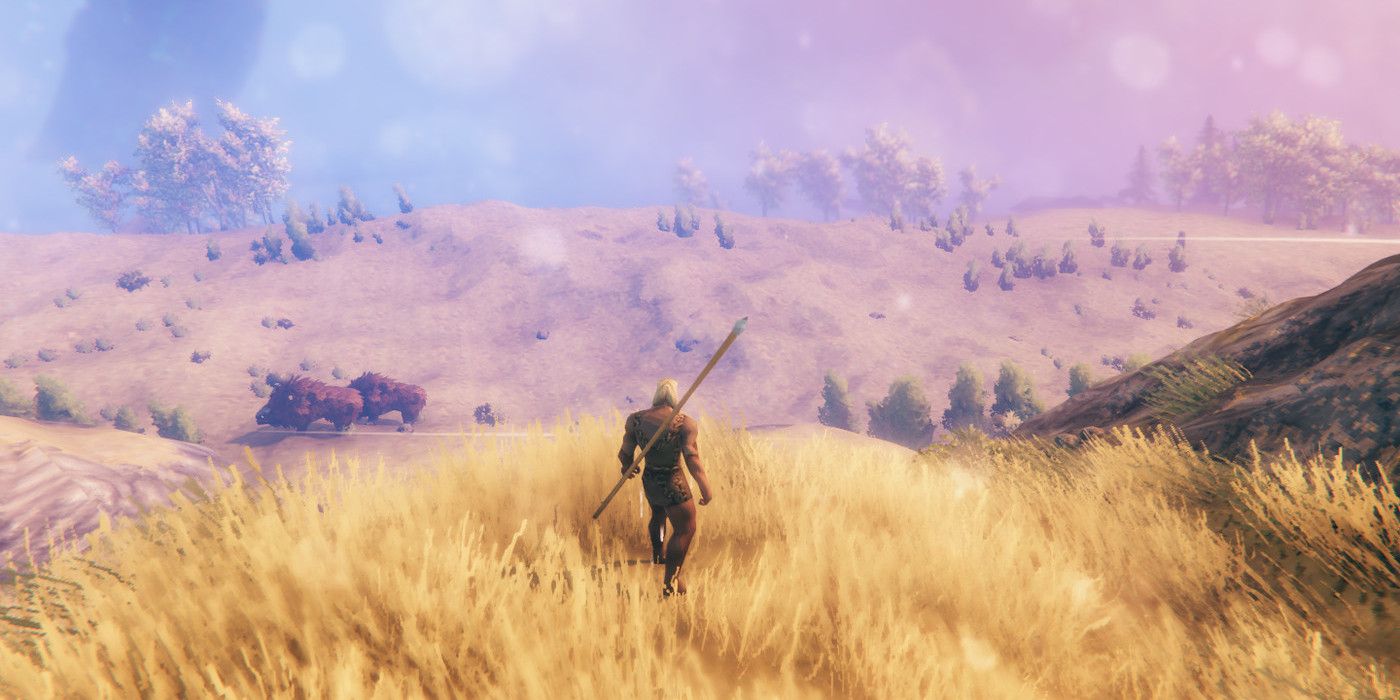Open-world games are a very popular genre and generally a great way to allow players to choose how they approach the game and the challenges that are presented at their own pace. This gives the player the feeling of autonomy within the game world, while also usually rewarding the player for exploration. It is thus up to the developer to create an interesting enough open world for players to explore and immerse themselves in, with size often factoring into the discussion.
Valheim is an open-world survival game using the backdrop of Norse mythology as its theme. Though Valheim is in early access, it sports a large circular-shaped world that players can explore, easily for hours on end. As such, it's easy to compare to another open-world Norse game: Skyrim. Though all of The Elder Scrolls games' map sizes vary from game to game and utilize a heavy narrative, they are chock-full of events and things for the player to do making them at times feel larger than they are.
The Elder Scrolls Series Map Sizes
In the early days of TES games, the map sizes were unfathomable. Bethesda claimed TES Arena to be over 9 million kilometers large, and when venturing in TES Arena, a player can only traverse so far before the game becomes buggy, with looping terrain upon leaving the town for too long. The areas between towns are infinite and, as a result, require the player to fast travel if they do not want to see the same building and terrain over and over again. TES2 Daggerfall is the sequel to Arena and has a whopping open-world size of approximately 161,000 square kilometers. Daggerfall accomplished this using procedurally generated terrain, similar to that of Arena though to a less buggy extent.
TES3 Morrowind is the next in the series and features a fully 3D rendered world at about 16 square kilometers. This is much much smaller than the first two Elder Scrolls games, though Bethesda crafted the world of Morrowind by hand instead of relying on a procedurally generated terrain. TES4 Oblivion followed Morrowind with its 3D landscape and more hand-crafted design. Oblivion took place in the province of Cyrodiil sporting an open-world map size of 41 square kilometers. Though Cyrodiil is a larger world than Morrowind, it feels rather sparse with so much space in between all of the points of interest. As a result, a player would most likely use the newly introduced fast travel mechanic to reach key locations in Oblivion.
The World of Skyrim
Skyrim is the latest in the main series of Elder Scrolls games and came out in November of 2011. It takes place in the province of Skyrim and houses an open-world size of 37.1 square kilometers, smaller than Oblivion's Cyrodiil, but filled with many more activities for the player. This includes many more dungeons and fortresses to clear, wildlife to find, and random events to encounter. A player could complete the main story of Skyrim without ever encountering a majority of what the game world has to offer. This makes Skyrim feel much bigger than it probably should despite the size of its landscape, less so if the player feels inclined to fast travel around instead of hoofing it.
In the world of Skyrim, players are tasked with completing quests and chatting with the local NPCs. Being an RPG, players are expected to manage their character's progression and stats beyond the equipment they find and create, as well as the relationships of the characters they come across. This gives players a strong sense of identity when they are allowed to choose how to tackle many of the scenarios presented to them, much like how open-world RPGs tend to be. On top of this, Skyrim's world holds many secrets and rare encounters hidden from the player that have kept them coming back to the game nearly 10 years after its release.
The World of Valheim
Valheim is an open-world survival game that uses procedurally generated terrain to make each of its worlds feel unique for each player. When starting out in Valheim, the player will start in the dead center of a large circular map filled with unexplored fog. The size is in the ballpark of 314 square kilometers, much larger than Skyrim's map and the previous 3 TES series games combined. Though Valheim has a bigger world to explore, it has vast areas of mostly empty oceans and procedurally repeated biomes that are sprawled throughout. Despite being in early access, the game feels like there is a lot to do as it places a large emphasis on realism.
Valheim tasks the player with scavenging for food and surviving the ruthless creature and boss encounters, with a large focus on building and crafting. The difficulty only increases as the player ventures outwards from their starting location to the subsequent biomes. Much like in Skyrim, players in Valheim will harvest ore materials, craft weapons, cook food, concoct potions, and gain skills depending on the equipment and tactics used (such as stealth). Both Skyrim and Valheim also offer mod support and a strong supportive community, but that is about where their similarities end. In Valheim players can build structures anywhere they wish in the large open world, though each biome has its own share of increasing risk and danger. So, it is up to the player to decide for themselves the risk involved when exploring.
Valheim is still in early access, so a lot of its content has yet to be released. Currently, Gold doesn't have many uses, and some of the later biomes are mostly empty with planned content on the horizon. Despite this, Valheim still has many things to offer for the player to do.
Valheim is available for PC.




